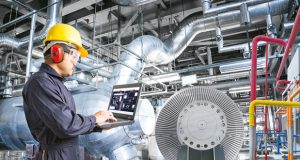 Jason Instrell, Industry Lead at SFG20, the industry standard for facility maintenance specifications, offers valuable advice on strategies to help reduce your carbon footprint
Jason Instrell, Industry Lead at SFG20, the industry standard for facility maintenance specifications, offers valuable advice on strategies to help reduce your carbon footprint
As the world grapples with the realities of climate change, the construction industry has a significant role to play in reducing carbon emissions. In the UK, buildings contribute to 33 per cent of the greenhouse gas (GHG) emissions and 40 per cent of the global energy consumption.
The embodied carbon of a building includes the carbon emissions associated with the extraction, production, and transportation of construction materials, as well as the carbon emissions from the construction process itself. This can be equivalent to 20 years’ worth of operational carbon emissions.
In recent years, the focus has been on reducing operational carbon via initiatives such as the improvement of building insulation and installing energy efficient alternatives, such as LED lighting. Although these are proven ways for sites to reduce operational expenditure and carbon emissions, it should be noted that they still add to the embodied carbon of the site as new products and materials are used and old ones are removed and disposed of.
Embodied carbon can be reduced during the initial design and planning stages. By specifying construction products and materials that are available locally and extracted, manufactured, and delivered via low-carbon means, waste can be reduced through recycling to maintain existing assets in a building.
From HVAC systems and lighting to office equipment and refrigeration, building assets consume significant amounts of energy, accounting for a vast portion of carbon emissions in the built environment. However, through effective maintenance strategies, building maintenance professionals can make a positive impact by reducing energy consumption, minimising waste, and implementing sustainable practices, all while ensuring the smooth operation of building systems.
TOP TIPS
Below are some top tips for facility maintenance professionals to tackle their buildings’ carbon footprint.
- Conduct a carbon footprint assessment
Gain a better understanding of the carbon emissions associated with maintenance activities by conducting a carbon footprint assessment. This analysis will create a starting point for current emissions, spotlight high-impact carbon areas, and pinpoint where to concentrate efforts.
Typically, building assets with a high carbon footprint include: HVAC systems; lighting; digital equipment and refrigeration. These assets are vital to a building’s day-to-day running, the heart and lungs of any space, but can consume an overwhelming amount of energy, making them an ideal candidate for energy efficiency and carbon cutting maintenance plans.
By having an effective planned preventive maintenance (PPM) strategy, that maintains equipment to current standards, we can help reduce costly reactive works that occur from faults and system breakdowns and help building managers avoid asset downtime. Keeping these critical systems in good condition throughout their life will help them consume less energy, it will stop equipment working harder than it needs to, and it will increase reliability and the overall performance of the building.
- Develop a sustainability plan
Building maintenance professionals should develop a specific sustainability plan that outlines clear, measurable goals to reduce their carbon footprint, such as upgrading systems or equipment, adjusting maintenance techniques, or reducing reliance on fossil fuels.





